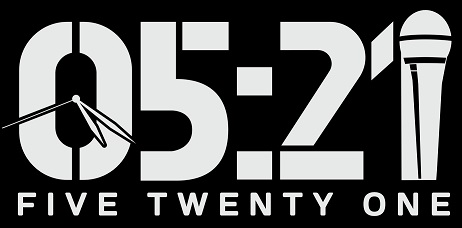Your basket is currently empty!
Accumulated Depreciation Definition, Example, Sample
Therefore, accumulated depreciation is the annual depreciation X the years the asset has been in service. Learn about accumulated depreciation and different types of asset depreciation in accounting. This accumulated depreciation is purely an estimate, however, there’s no actual cash transaction going on. The accumulated depreciation for Year 1 of the asset’s ten-year life is $9,500. Since we are using straight-line depreciation, $9,500 will be the depreciation for each year. However, the accumulated depreciation is shown in the following table since it is the sum of the asset’s depreciation.
- To calculate accumulated depreciation, you’ll need to add all the depreciation amounts for each year to date.
- Let’s explain what all of that means by defining both assets and accumulated depreciation in detail.
- Ask a question about your financial situation providing as much detail as possible.
- The value of the asset on your business balance sheet at any one time is called its book value – the original cost minus accumulated depreciation.
It is important to note that accumulated depreciation cannot be more than the asset’s historical cost even if the asset is still in use after its estimated useful life. For example, Company A buys a company vehicle in Year 1 with a five-year useful life. Regardless of the month, the company will recognize six months’ worth of depreciation in Year 1. The company will also recognize a full year of depreciation in Years 2 to 5. Because the depreciation process is heavily rooted in estimates, it’s common for companies to need to revise their guess on the useful life of an asset’s life or the salvage value at the end of the asset’s life.
Let’s say you have a car used in your business that has a value of $25,000. It depreciates over 10 years, so you can take $2,500 in depreciation expense each year. No, accumulated depreciation is considered a permanent account, since it doesn’t close at the end of the accounting period. These are recorded on the statement of financial position, or commonly known as the balance sheet. One significant limitation of Accumulated Depreciation data is its inherently historical nature.
Business owners can claim a valuable tax deduction if they keep track of the accumulated depreciation of their eligible assets. Access to accumulated depreciation data is readily available through the InvestingPro platform. Instantly obtain the most up-to-date quarterly information and evaluate competitor benchmark data for accumulated depreciation. The articles and research support materials available on this site are educational and are not intended to be investment or tax advice. All such information is provided solely for convenience purposes only and all users thereof should be guided accordingly. A contra asset is defined as an asset account that offsets the asset account to which it is paired, i.e. the reverse of the standard impact on the books.
Access Exclusive Templates
The total value of all the assets of a company is listed on the balance sheet rather than showing the value of each individual asset. Most capital assets (except land) have a residual value, sometimes called “scrap value” or salvage value. This value is what the asset is worth at the end of its useful life and what it could be sold for when the company has finished with it. For example, if an asset has a five-year usable life and you purchase it on January 1st, then 100 percent of the asset’s annual depreciation can be reported in year one. However, if you buy the same asset on July 1st, only 50 percent of its value can be depreciated in year one (since you owned it for half the year). Proration considers the accounting period that an asset had depreciated over based on when you bought the asset.
Create a Free Account and Ask Any Financial Question
In years two and three, the car continues to be useful and generates revenue for the company. Capitalizing this item reflects the initial expense as depreciation over the asset’s useful is accumulated depreciation a current asset life. In this way, this expense is reflected in smaller portions throughout the useful life of the car and weighed against the revenue it generates in each accounting period.
They have the expertise and knowledge to provide you with valuable insights and help you make informed decisions about these concerns. So since the life of the toy-producing machine above is 15 years, we will add together the digits representing the number of years of the life of the assets. Let’s assume that, in this instance, we wish to calculate the accumulated depreciation after 3 years. For example, if you use your car 60% of the time for business and 40% for personal, you can only depreciate 60%.
Journal Entry for Accumulated Depreciation
Depreciation expense serves to match the original cost of acquiring an asset with the revenue it generates over its lifespan. This allocation method can help a business estimate how an asset can impact the company’s financial performance with more accuracy. For example, office furniture is depreciated over seven years, automobiles get depreciated over five years, and commercial real estate is depreciated over 39 years. MACRS depreciation is an accelerated method of depreciation, because allows business https://business-accounting.net/ to take a higher depreciation amount in the first year an asset is placed in service, and less depreciation each subsequent year. If you must make a choice between classifying accumulated depreciation as an asset or liability, it should be considered an asset, simply because that is where the account is reported in the balance sheet. If it were to be categorized as a liability, this would create the incorrect impression that the reporting entity has a liability to a third party, which is not the case.
Moreover, you can date the journal entries for the depreciation for the period in which it was recorded. If the assets were purchased in 2023, the depreciation journal entries should also be in 2023. Lastly, for the vehicle that has been salvaged and taken out of service, you can make a journal entry to reflect the disposal of the vehicle. This is more informative than reporting only the net amount of $15,000 (which would likely be the case if the contra asset account Accumulated Depreciation was not used). On a balance sheet, the net value of the asset is calculated by subtracting the accumulated depreciation from its initial cost.
As a result, companies must recognize accumulated depreciation, the sum of depreciation expense recognized over the life of an asset. Accumulated depreciation is reported on the balance sheet as a contra asset that reduces the net book value of the capital asset section. The accumulated depreciation account is an asset account with a credit balance (also known as a contra asset account). If this derecognition were not completed, a company would gradually build up a large amount of gross fixed asset cost and accumulated depreciation on its balance sheet. When recording depreciation in the general ledger, a company debits depreciation expense and credits accumulated depreciation.
Accumulated depreciation is typically shown in the Fixed Assets or Property, Plant & Equipment section of the balance sheet, as it is a contra-asset account of the company’s fixed assets. Showing contra accounts such as accumulated depreciation on the balance sheets gives the users of financial statements more information about the company. For example, if Poochie’s just reported the net amount of its fixed assets ($49,000 as of December 31, 2019), the users would not know the asset’s cost or the amount of depreciation attributed to each class of asset. Many companies rely on capital assets such as buildings, vehicles, equipment, and machinery as part of their operations. In accordance with accounting rules, companies must depreciate these assets over their useful lives.
Assets are economic resources a business owns which help generate revenue. They are recorded in the balance sheet, along with liabilities and owner’s equity. For each of the ten years of the useful life of the asset, depreciation will be the same since we are using straight-line depreciation.
Submit to get your retirement-readiness report.
When the asset is removed from service, the accumulated depreciation is marked as a debit and the value of the asset as a credit. The negative accumulated depreciation offsets the positive value of the asset. You won’t see “Accumulated Depreciation” on a business tax form, but depreciation itself is included, as noted above, as an expense on the business profit and loss report. You can count it as an expense to reduce the income tax your business must pay, but you didn’t have to spend any money to get this deduction.
Instead, accumulated depreciation is the way of recognizing depreciation over the life of the asset instead of recognizing the expense all at once. Accumulated depreciation is incorporated into the calculation of an asset’s net book value. To calculate net book value, subtract the accumulated depreciation and any impairment charges from the initial purchase price of an asset.


